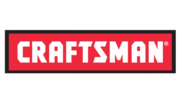Instrukcja obsługi Craftsman CMCCSL621
Craftsman
Maszyna do piłowania
CMCCSL621
Przeczytaj poniżej 📖 instrukcję obsługi w języku polskim dla Craftsman CMCCSL621 (48 stron) w kategorii Maszyna do piłowania. Ta instrukcja była pomocna dla 20 osób i została oceniona przez 2 użytkowników na średnio 4.5 gwiazdek
Strona 1/48

final page size: 8.5 x 5.5 in CRAFTSMANfinal page size: 8.5 x 5.5 in CRAFTSMAN
20V Max* Chainsaw Lopper
Ébrancheur avec scie à chaîne 20 V max*
Podadora de Sierra de Cadena 20 V Máx*
CMCCSL621
INSTRUCTION MANUAL | GUIDE D’UTILISATION | MANUAL DE INSTRUCTIONES
IF YOU HAVE QUESTIONS OR COMMENTS, CONTACT US.
POUR TOUTE QUESTION OU TOUT COMMENTAIRE, NOUS CONTACTER.
SI TIENE DUDAS O COMENTARIOS, CONTÁCTENOS.
1-888-331-4569 WWW.CRAFTSMAN.COM

English (original instructions) 1
Français (traduction de la notice d’instructions originale) 14
Español (traducido de las instrucciones originales) 29

1
ENGLISH
COMPONENTS
1 Top chain cover jaw
2 Lower guard jaw
3 Chain guide bar
4 Oiling cover
5 Latch
6 Battery pack
7 On/Off switch actuators
8 Chipping ejection point
Definitions: Safety Alert Symbols and Words
This instruction manual uses the following safety alert symbols and words to alert you to hazardous situations and your risk
of personal injury or property damage.
DANGER: will Indicates an imminently hazardous situation which, if not avoided, result in death or seriousinjury.
WARNING: could Indicates a potentially hazardous situation which, if not avoided, result in death or seriousinjury.
CAUTION: may Indicates a potentially hazardous situation which, if not avoided, result in minor or moderateinjury.
(Used without word) Indicates a safety related message.
NOTICE: may propertydamage Indicates a practice which, if not avoided, not related to personal injury result in .
WARNING: Read all safety warnings and all
instructions. Failure to follow the warnings and
instructions may result in electric shock, fire and/or
seriousinjury.
WARNING: Never modify the product or any part of it.
Damage or personal injury couldresult.
WARNING: To reduce the risk of injury, read the
instructionmanual.
If you have any questions or comments about this or
any product, call CRAFTSMAN toll free at:
1-888-331-4569.
1324
5
7
8
6
Fig. A
Specyfikacje produktu
| Marka: | Craftsman |
| Kategoria: | Maszyna do piłowania |
| Model: | CMCCSL621 |
Potrzebujesz pomocy?
Jeśli potrzebujesz pomocy z Craftsman CMCCSL621, zadaj pytanie poniżej, a inni użytkownicy Ci odpowiedzą
Instrukcje Maszyna do piłowania Craftsman

9 Stycznia 2025

7 Października 2024

30 Września 2024

5 Września 2024

5 Września 2024

4 Września 2024

30 Sierpnia 2024

29 Sierpnia 2024

26 Sierpnia 2024

26 Sierpnia 2024
Instrukcje Maszyna do piłowania
- Maszyna do piłowania AEG
- Maszyna do piłowania Worx
- Maszyna do piłowania Milwaukee
- Maszyna do piłowania Stihl
- Maszyna do piłowania Bosch
- Maszyna do piłowania Yato
- Maszyna do piłowania Parkside
- Maszyna do piłowania Lionelo
- Maszyna do piłowania Global
- Maszyna do piłowania Stiga
- Maszyna do piłowania Toolcraft
- Maszyna do piłowania Festool
- Maszyna do piłowania Bavaria By Einhell
- Maszyna do piłowania MacAllister
- Maszyna do piłowania Stanley
- Maszyna do piłowania Black & Decker
- Maszyna do piłowania Scheppach
- Maszyna do piłowania Proxxon
- Maszyna do piłowania Ford
- Maszyna do piłowania Ribimex
- Maszyna do piłowania Hazet
- Maszyna do piłowania RIKON
- Maszyna do piłowania Grizzly
- Maszyna do piłowania Gardena
- Maszyna do piłowania DeWalt
- Maszyna do piłowania Einhell
- Maszyna do piłowania Remington
- Maszyna do piłowania Genesis
- Maszyna do piłowania Hyundai
- Maszyna do piłowania Silverline
- Maszyna do piłowania Husqvarna
- Maszyna do piłowania Makita
- Maszyna do piłowania Ozito
- Maszyna do piłowania Draper
- Maszyna do piłowania Fuxtec
- Maszyna do piłowania RYOBI
- Maszyna do piłowania Chicago Pneumatic
- Maszyna do piłowania Cobra
- Maszyna do piłowania Flex
- Maszyna do piłowania Yard Force
- Maszyna do piłowania GO/ON
- Maszyna do piłowania DEDRA
- Maszyna do piłowania Baumr-AG
- Maszyna do piłowania Biltema
- Maszyna do piłowania Sovereign
- Maszyna do piłowania CMI
- Maszyna do piłowania Hilti
- Maszyna do piłowania Sterwins
- Maszyna do piłowania Max Bahr
- Maszyna do piłowania Trotec
- Maszyna do piłowania Dremel
- Maszyna do piłowania Meec Tools
- Maszyna do piłowania AL-KO
- Maszyna do piłowania Güde
- Maszyna do piłowania Texas
- Maszyna do piłowania ATIKA
- Maszyna do piłowania Bavaria
- Maszyna do piłowania Zipper
- Maszyna do piłowania Mafell
- Maszyna do piłowania Florabest
- Maszyna do piłowania Solo
- Maszyna do piłowania Ferrex
- Maszyna do piłowania DURO PRO
- Maszyna do piłowania McKenzie
- Maszyna do piłowania Westfalia
- Maszyna do piłowania Ergotools Pattfield
- Maszyna do piłowania Oregon Scientific
- Maszyna do piłowania Fein
- Maszyna do piłowania Ferm
- Maszyna do piłowania Hitachi
- Maszyna do piłowania Herkules
- Maszyna do piłowania Matrix
- Maszyna do piłowania Fieldmann
- Maszyna do piłowania Homelite
- Maszyna do piłowania Ridgid
- Maszyna do piłowania Shindaiwa
- Maszyna do piłowania Gardenline
- Maszyna do piłowania PowerPlus
- Maszyna do piłowania Bebe Confort
- Maszyna do piłowania Alpha Tools
- Maszyna do piłowania Hobart
- Maszyna do piłowania Vonroc
- Maszyna do piłowania Spear & Jackson
- Maszyna do piłowania Powerfix
- Maszyna do piłowania HiKOKI
- Maszyna do piłowania Workzone
- Maszyna do piłowania McCulloch
- Maszyna do piłowania Hammer
- Maszyna do piłowania Proviel
- Maszyna do piłowania Porter-Cable
- Maszyna do piłowania Metabo
- Maszyna do piłowania Bestgreen
- Maszyna do piłowania EGO
- Maszyna do piłowania Cotech
- Maszyna do piłowania Skil
- Maszyna do piłowania Cocraft
- Maszyna do piłowania Wolfcraft
- Maszyna do piłowania Alpina
- Maszyna do piłowania Brennenstuhl
- Maszyna do piłowania Clarke
- Maszyna do piłowania Tryton
- Maszyna do piłowania ACG
- Maszyna do piłowania Sun Joe
- Maszyna do piłowania Tacklife
- Maszyna do piłowania Luxor
- Maszyna do piłowania Maktec
- Maszyna do piłowania Bort
- Maszyna do piłowania Tanaka
- Maszyna do piłowania Power Craft
- Maszyna do piłowania Troy-Bilt
- Maszyna do piłowania Topcraft
- Maszyna do piłowania Martha Stewart
- Maszyna do piłowania Gamma
- Maszyna do piłowania Kress
- Maszyna do piłowania Dolmar
- Maszyna do piłowania Duro
- Maszyna do piłowania Qualcast
- Maszyna do piłowania Varo
- Maszyna do piłowania Pattfield
- Maszyna do piłowania Defort
- Maszyna do piłowania Max
- Maszyna do piłowania IKRA
- Maszyna do piłowania Truper
- Maszyna do piłowania BabyGO
- Maszyna do piłowania Echo
- Maszyna do piłowania Bruder Mannesmann
- Maszyna do piłowania MTM
- Maszyna do piłowania Powerblade
- Maszyna do piłowania Maruyama
- Maszyna do piłowania Meister Craft
- Maszyna do piłowania Batavia
- Maszyna do piłowania Holzmann
- Maszyna do piłowania Graphite
- Maszyna do piłowania Huvema
- Maszyna do piłowania Black Decker
- Maszyna do piłowania Elu
- Maszyna do piłowania Blucave
- Maszyna do piłowania Plantiflor
- Maszyna do piłowania Lux Tools
- Maszyna do piłowania Kompernass
- Maszyna do piłowania Triton
- Maszyna do piłowania BGU
- Maszyna do piłowania Avantco
- Maszyna do piłowania Kreg
- Maszyna do piłowania Sthor
- Maszyna do piłowania Verto
- Maszyna do piłowania Vulcan
- Maszyna do piłowania Germania
- Maszyna do piłowania FOM
- Maszyna do piłowania Anova
- Maszyna do piłowania Hurricane
- Maszyna do piłowania Budget
- Maszyna do piłowania Ergofix
- Maszyna do piłowania Challenge Xtreme
- Maszyna do piłowania King Craft
- Maszyna do piłowania Maxx
- Maszyna do piłowania Pro-Cut
- Maszyna do piłowania Narex
- Maszyna do piłowania Elektra Beckum
- Maszyna do piłowania Toolson
- Maszyna do piłowania Felisatti
- Maszyna do piłowania Power Smart
- Maszyna do piłowania Backyard Pro Butcher Series
- Maszyna do piłowania Toledo
- Maszyna do piłowania EFA
- Maszyna do piłowania Erbauer
- Maszyna do piłowania Exakt
- Maszyna do piłowania Jonsered
- Maszyna do piłowania Gude Pro
- Maszyna do piłowania MSW
- Maszyna do piłowania Backyard Pro
- Maszyna do piłowania Royal Catering
- Maszyna do piłowania Robust
- Maszyna do piłowania Ultranatura
- Maszyna do piłowania FIXIT
- Maszyna do piłowania Einhell Bavaria
- Maszyna do piłowania MyTool
- Maszyna do piłowania Morrison
- Maszyna do piłowania Garland
- Maszyna do piłowania Prowork
- Maszyna do piłowania Donau Elektronik
- Maszyna do piłowania TAURUS Titanium
- Maszyna do piłowania Maxbear
- Maszyna do piłowania Stalco
- Maszyna do piłowania Topex
- Maszyna do piłowania Turbo-Silent
- Maszyna do piłowania Total
- Maszyna do piłowania Kraftronic
Najnowsze instrukcje dla Maszyna do piłowania

3 Kwietnia 2025

3 Kwietnia 2025

1 Kwietnia 2025

1 Kwietnia 2025

1 Kwietnia 2025

1 Kwietnia 2025

1 Kwietnia 2025

1 Kwietnia 2025

1 Kwietnia 2025

29 Marca 2025